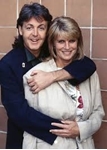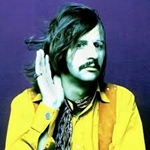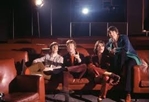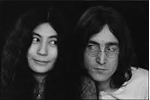- Register
- Log in to Tune-In
- Wishlist (0)
-
Shopping cart
(0)
You have no items in your shopping cart.
Beatles News

In celebration of what would have been John’s Lennon’s 79th birthday, grassroots non-profit Theatre Within has announced artists for the 39th Annual John Lennon Tribute on Friday, December 6. The event will be held at Peter Jay Sharp Theatre at Symphony Space on Broadway and 95th street.
In addition to artist-activist Natalie Merchant, who will be honored as the sixth recipient of the “John Lennon Real Love Award,” the Tribute will feature performances by Joan Osborne, Rachael Yamagata, Sam Amidon, Willie Nile and Raye Zaragoza, backed by a band led by drummer Rich Pagano, one of the founding members of the Fab Faux.
Merchant, who will be appearing in the long-running charity concert for first time, said in a statement:
“John and Yoko’s activism had a profound impact upon me as a child. Through their ingenious war protests they challenged the entire world to reflect upon itself. In my estimation, ‘Imagine’ remains the most powerful three minutes and eight seconds of music ever recorded. It contains a vision of our highest aspirations in the most concise language and simple melody. John and Yoko realized that popular details

When The Beatles released their debut album, it marked the arrival of a formidable new songwriting team. The work of John Lennon and Paul McCartney, who penned “I Saw Her Standing There,” “Please Please Me,” and other gems, had no trouble standing beside tracks by Carole King and Burt Bacharach.
But that wasn’t the only revelation. In the group’s spirited covers of “Boys” (Ringo Starr) and “Chains” (George Harrison), The Beatles showed anyone in the band could carry a lead vocal — and do so convincingly.
However, on the songwriting front, the originals were all credited to Lennon/McCartney. As time passed, that wouldn’t change much for Ringo. By the end of the Fab Four’s run, he’d only have two songwriting credits on his own.
George, on the other hand, would become a prolific (and highly accomplished) songwriter by the time the band parted ways in 1970. And he started filling up that songbook on the Beatles’ second LP.
Source: cheatsheet.com
details
John Lennon first met Yoko Ono back in 1966. The Beatles icon later fell head over heels in love with the artist and they tied the knot in 1979. But the relationship wasn’t always easy, with Ono remembering the backlash they faced from fans all over the globe.
In an interview with The Telegraph in 2012, she recalled the impact being with Lennon had on her art career and how their marriage affected the direction of his music.
“In a way both John and I ruined our careers by getting together,” she said. “Although we weren’t aware of it at the time.”
After getting together with Ono, Lennon moved away from mainstream music, The Beatles splitting just a year after they were married.
She encouraged him to explore more experimental music and he drew her attention into their relationship and away from her art.
Source: Minnie Wright/express.co.uk
details
Paul McCartney has been a committed vegetarian since his late wife, Linda, stopped cooking meat in the 1970s—but there’s one ritual the former Beatle still carries on from his carnivorous life: carving duty at the Christmas Day feast.
“The thing about becoming vegetarian is that some of the things that I saw as traditional male roles — not wanting to get too sexist or genderist here — such as barbecuing, and slicing the roast, went,” McCartney, 77, told the Sunday Times. “I wanted something to carve at Christmas!”
Linda’s initial solution was to create “a macaroni cheese that she shaped and left to set,” says McCartney. These days, however, the legendary songwriter has the slightly easier task of slicing through a vegetarian roast made from mushroom duxelles straight out of the best-selling Linda McCartney vegetarian range. Launched nearly 30 years ago, the brand is now a familiar sight in British supermarkets.
Source: Phil Boucher/people.com
details
In John Lennon’s last major interview, he was his usually provocative self. He spoke of how hurt he was by George Harrison’s new book, the Beatles songs he considered to be garbage, and why he thought Paul McCartney tried to sabotage “Across the Universe.”
But that was only the half of it. Speaking with Playboy’s David Sheff, John also said Paul addressed “Get Back” to his wife Yoko Ono. ” “I think there’s some underlying thing about Yoko in there,” he said. “You know, ‘Get back to where you once belonged.’ Every time he sang the line, he’d look at Yoko.”
When Sheff asked if he was joking, John insisted he wasn’t. “Maybe he’ll say I’m paranoid. You know, he can say, ‘I’m a normal family man. Those two are freaks.’ That’ll leave him a chance to say that one.”
While it’s impossible to get inside Paul’s mind during those sessions, we do know how the song evolved over time. It started out as social commentary before Paul brought it around to his fictional Jojo and Loretta.
Source: cheatsheet.com

Peter Asher is more than qualified to take us on a journey through the Beatles’ many songs and adventures. He’s a longtime friend of the band, and in the late ’60s was a producer for the Beatles’ Apple label, signing such talents as James Taylor. He’s been producing stars ever since and recently hosted SiriusXM’s radio show about the Fab Four, “From Me to You.” Though hardcore Beatles fans won’t find much that’s terribly surprising about the band in Asher’s new book, “The Beatles from A to Zed,” the writer and producer excels at excavating details and connections that sparkle and entertain.
Adopting Asher’s alphabetical format, here are some delightful — and less-than-delightful — takeaways from Asher’s book. (Space limitations kept me from including the full alphabet.)
A: A is for Abbey Road Studios. It was originally known as EMI Recording Studios and was inaugurated by Sir Edward Elgar, England’s famous classical composer who wrote that school graduation grind, “Pomp and Circumstance.”
Source: By Sibbie O’Sullivan / The Washington Post/heraldnet.com

Looking for a unique Christmas gift?
Two upcoming auctions may just offer the perfect surprise on Dec 25 for the recipient if he is a fan of John Lennon, Ringo Starr or Elton John.
Lennon's trademark round sunglasses and a parking ticket issued on April 25, 1969 to fellow Beatle Starr - for a traffic offence - are up for auction online between Dec 6 and 13.
The two items come from Mr Alan Herring, a driver for the Fab Four.
The eyewear has defects but he told AFP that Lennon had told him not to fix them after the driver volunteered to get repairs done.
For fans of John, there is a chance to get hold of the original lyric manuscripts of landmark songs Candle In The Wind, Goodbye Yellow Brick Road, Bennie And The Jets and Saturday Night's Alright For Fighting.
The seller in the auction on Dec 9 is Ms Maxine Taupin, former wife of Bernie Taupin, John's longtime songwriter.
Source: LOH KENG FATT/straitstimes.com
details
John Lennon was shot and killed by Mark Chapman outside the home he shared with Yoko Ono in Manhattan, New York, on December 8, 1980. As the 39th anniversary of his death approaches, an unearthed interview with Ono sees her opening up about losing her husband in such a sudden and devastating way.
Back in 2012, Ono spoke out about her approach to life, telling The Telegraph: “I want to tell you this story.
“When I was in elementary school in Japan they had a textbook with a picture of a Japanese warrior who asked to be given seven sufferings and eight disasters, because he wanted to take over everybody’s suffering and disasters,” she recalled.
“It’s a courageous thing to do, and I was only a little girl and I thought that sounds good and I wanted to be like him. Do good for the world in the sense of taking everyone’s pain away.
“I asked for the seven sufferings and my life became terribly difficult. All sorts of misery,” Lennon’s wife explained.
Source: Minnie Wright/express.co.uk
details
As the years passed, John Lennon seemed to think less and less of his Beatles songs. In 1980, while sitting for his last major interview, John labeled a number of his well-liked compositions as either “throwaways” or “pieces of garbage.”
That list included tracks as diverse as “And Your Bird Can Sing” from Revolver (“another horror”) and “Cry Baby Cry” from The White Album (“a piece of rubbish”). And while John was proud of Sgt. Pepper’s Lonely Hearts Club Band, he labeled “Good Morning, Good Morning” as more junk.
However, there was one Sgt. Pepper’s song that gained in stature in John’s eyes over the years. Though he described it as a rush-job around the time he wrote and recorded the song with The Beatles, he ended up calling it “pure, like a painting, a pure watercolor” shortly before he died.
Source: cheatsheet.com
details
Beatles fans are being invited to listen to ‘Sgt. Pepper’s Lonely Hearts Club Band’ at an immersive event that aims to give the impression that the Fab Four are performing live.
The pioneering experience, which is set to take place in Liverpool, will present fans with a remixed version of the legendary 1967 album.
The record will be played in Dolby Atmos with speakers being placed around the fans in a bid to transport them to Abbey Road Studios, where the album was recorded.
Producer George Martin’s original tapes have been remixed by his son Giles Martin – who is also a Grammy winning producer.
“Without Liverpool there would be no ‘Sgt Pepper’s’. Liverpool is where it should be,” he told the Liverpool Echo.
Source: Nick Reilly/nme.com
details

The Beatles were an English rock band that formed in Liverpool and went on to completely change the course of popular music. Although the group broke up over forty years ago, fans still love and obsess over the band and the music they wrote still resonates with people today. From soft-rock hits like “Strawberry Fields” and “Lucy in the Sky with Diamonds” to sweet ballads like “Hey Jude,” there is a Beatles song for every occasion.
The Beatles even have some holiday hits to jam to, although they never achieved the level of success that some of their other songs did. Although not even the most devout Beatles fan may know what the band did especially for the holidays each year that was a special treat just for their fan club.
The Beatles spent their early years as a band playing clubs around Liverpool. Paul McCartney, John Lennon, George Harrison, and Ringo Starr had what it took to make it big and after their first big hit, “Love Me Do,” debuted on the airwaves. It was only a few short years until they achieved worldwide stardom. By 1964, the Beatles were the biggest stars in the world and led what became known as the “British Invasion” of English pop artist
details

In February of 1962, Beatles manager Brian Epstein arranged an audition for the band in front of BBC Radio executives. After struggling to find the then-unknown mop tops a record deal, Epstein hoped that some radio exposure would lead the group to a contract.
BBC producer Peter Pilbeam was impressed with the group’s four-song audition and booked them to appear on the program Teenagers Turn (Here We Go), to be taped on March 7. The line-up for that initial broadcast featured John Lennon, Paul McCartney, George Harrison and Pete Best (Ringo Starr wouldn't join the group until August that year).
“They were very nervous, obviously,” Pilbeam later recalled on a radio interview. “I was very impressed with them. I booked them straight away for another date after that first show.”
Thus began a relationship that would span roughly three years, with the Beatles delivering 52 performances for the BBC between 1962 and 1965. Decades later, recordings from these shows would make up the compilation album Live at the BBC.
Source: ultimateclassicrock.com
details
Ludwig van Beethoven is one of the most acclaimed musicians of all time. Yoko Ono is a touch less acclaimed. Despite the difference in perception of the two musicians, they both inspired one of the most intriguing Beatles compositions: “Because.”
Like many Beatles records, “Because” is is a bridge between the new and the old. The track’s appeal to contemporary audiences was rooted in its Beach Boys-style vocal harmonies and psychedelic lyrics. To appeal to an older generation, the song has a stiff, almost mathematical chord progression which recalls classical music.
The classical elements of “Because” were intentional. Snopes quotes John Lennon explaining the song’s origins: “[Yoko] trained as a classical musician. I didn’t know that until this morning. In college she majored in classical composition. Now we stimulate each other like crazy. This morning I wrote this song called ‘Because.’ Yoko was playing some classical bit, and I said ‘Play that backwards,’ and we had a tune.”
Source: cheatsheet.com

Todd Rundgren may be on the phone to draw attention to an all-star tribute to the Beatles' "White Album" on which he'll share a stage with Micky Dolenz of the Monkees, Joey Molland of Badfinger, Christopher Cross, and Jason Scheff of Chicago.
But that doesn't mean he has to like it.
And by "it," I mean "The White Album."
"I make no bones about it," Rundgren says.
"I think it's a contender for the Beatles' worst album. And it's not necessarily a judgment about the music on it. I'm talking about a Beatle album, not a bunch of half attempts at solo albums, which is what 'The White Album' is. So as a Beatle album, it's terrible. Very rarely do all four of them play at the same time on the record. Having said that, it was a great start for a George Harrison solo record."
Rundgren laughs, as he does often in the course of casually dismissing one of rock's most celebrated albums with a disarmingly playful irreverence that couldn't be more charming.
Source: Ed Masley/azcentral.com

1. The Beatles got the idea for their name from Buddy Holly and The Crickets
The band liked the idea of using the name of an insect as a band name, and they were fans of Buddy Holly and the Crickets. Because John Lennon loved puns, he altered the spelling of “Beetles” to “Beatles”.
2. John Lennon’s father was absent for much of his early life but showed up when his son became famous
John Lennon’s father, Alfred Lennon, was a merchant mariner who had a stormy relationship with Lennon’s mother and was gone for most of his son’s youth. John Lennon was mostly raised by his aunt. When the Beatles exploded on the pop scene, Alfred Lennon tried to reconnect with his son and also made a novelty recording that was somewhat successful to capitalize on the fame of the Fab Four.
Source: Bo Weber
details